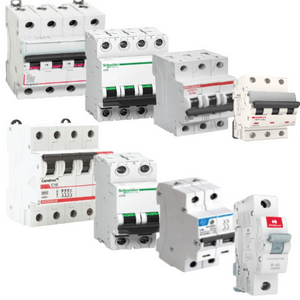MCB Switches

Introduction: Electrical safety is of paramount importance in every household and commercial establishment. To ensure the well-being of occupants and protect electrical systems from potential hazards, it is essential to have reliable circuit protection mechanisms in place. One such crucial component is the Miniature Circuit Breaker (MCB) switch. In this blog post, we will delve into the world of MCB switches, exploring their functionality, benefits, and significance in electrical systems.
What is an MCB Switch? The MCB switch, also known as a circuit breaker, is an electromechanical device designed to protect electrical circuits from overcurrents and short circuits. It serves as a crucial safety device, preventing damage to appliances, electrical wiring, and, most importantly, reducing the risk of electrical fires. MCB switches are typically found in residential, commercial, and industrial settings, where they provide efficient and reliable circuit protection.
Functionality and Operation: MCB switches are designed to automatically interrupt the flow of current when abnormal conditions are detected in an electrical circuit. They consist of three main components: a bimetallic strip, an electromagnet, and a trip mechanism. The bimetallic strip responds to overload conditions, causing the switch to trip and open the circuit. The electromagnet provides protection against short circuits, generating a magnetic force that trips the switch instantaneously.
Advantages of MCB Switches:
Enhanced Safety: MCB switches offer superior safety compared to traditional fuses. They provide better protection against overcurrents, short circuits, and ground faults, minimizing the risk of electrical accidents and fires.
Quick Response: MCB switches have a fast response time, swiftly detecting and interrupting abnormal currents. This rapid action helps prevent damage to electrical equipment and reduces the risk of electrical shock to individuals.
Convenience and Ease of Use: Unlike fuses that need to be replaced after they trip, MCB switches can be reset easily with a simple flick of a switch, restoring power to the circuit. This convenience saves time, effort, and money on frequent replacements.
Selective Tripping: MCB switches can be installed with different current ratings to suit the specific requirements of various electrical circuits. This allows for selective tripping, where only the affected circuit is disconnected while other circuits remain operational.
Diagnostic Capabilities: Some advanced MCB switches come with built-in indicators that provide visual alerts in case of faults or tripping. This feature enables quick identification of the problem, simplifying troubleshooting and maintenance tasks.
Longevity and Reliability: MCB switches are built to withstand regular operation and can last for an extended period. They offer better reliability and durability compared to fuses, reducing the need for frequent replacements.
Conclusion: In the realm of electrical safety, the MCB switch reigns supreme, offering robust circuit protection and peace of mind. With their advanced features, quick response time, and ease of use, MCB switches have become indispensable in modern electrical systems. Investing in quality MCB switches and ensuring their proper installation and maintenance is a crucial step in creating a safe and efficient electrical infrastructure.
Remember, electrical safety should never be compromised, and the MCB switch stands as a steadfast guardian, protecting your home or workplace from potential electrical hazards.












